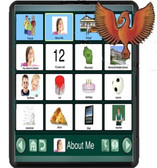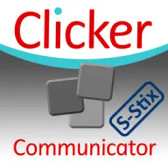 Loading... Please wait...
Loading... Please wait...- Home
- Augmentative Communication Device Evaluation
Categories
Augmentative Communication Device Evaluation
Augmentative Communication Device Evaluation
USE LETTERHEAD
(Sample Use ONLY For Educational Purpose)
Augmentative Communication Device Evaluation
Name: Date of Birth:
Address: Age:
Parent: Phone:
Date of Report:
Diagnosis: Congenital CMV, B25.8; Cerebral Palsy, G80.8; Speech/Language Disorder, F80.0
A. Current Communication Impairment and Background Information
(NAME OF CLIENT) is a 19 year old young man who has Congenital CMV and Cerebral Palsy, which affects cognitive functioning and speech. He is enrolled in a Multiple Disabilities Support class at (NAME OF SCHOOL). Although he really tries to speak, his verbal attempts are unintelligible.
B. Anticipated Course of Impairment – Given the nature and severity of (NAME OF CLIENT)’s communication disability, no significant increase in verbal communication skills is anticipated. (NAME OF CLIENT) requires speech/language pathologist treatment for expressive communication in the form of a speech generating device (SGD), recognize as Durable Medical Equipment that is appropriate treatment for persons with severe communication disorders who are unable to meet daily communication needs with natural communication methods.
C. Current Functional Status Hearing – (NAME OF CLIENT) is able to hear and attend to conversation and messages spoken on a speech-generating device (SGD).
- Hearing - (NAME OF CLiENT) is able to hear and attend to conversation and message spoken on a speech-generating device (SGD)
- Vision – (NAME OF CLIENT) requires visual targets of at least 2” square, that are on a high-contrast background, and are low in number and complexity.
- Physical – When the SGD and (NAME OF CLIENT) are positioned appropriately, (NAME OF CLIENT) is able to touch a 2.5” target on a dynamic display screen.
- Language Skills – (NAME OF CLIENT) has impaired receptive and expressive language skills, with receptive skills being higher than expressive skills. He attends to conversation around him, can make choices of preferred items, and recognizes photos and symbols of familiar people/items/places. Because he is a non-reader, (NAME OF CLIENT) is dependent on symbol-based system for expressive communication.
- Cognitive Skills – (NAME OF CLIENT) has significant cognitive impairment and requires adult supervision and assistance for all activities of daily living. His cognitive and language skills cannot be measured by standardized testing.
- Behavior – (NAME OF CLIENT) can become very frustrated, expressed byscreaming and movement. These behaviors decreased during the trial period with an SGD. By acknowledging that he was trying to communicate something and by giving him choices on the SGD, (NAME OF CLIENT) was able to be calmed.
D. Specific Daily Communication Needs – Through the day, at home, in the community and at school, when interacting with adults, peers, medical personnel and caregivers, (NAME OF CLIENT) needs to be able to greet and gain attention appropriately, make specific choices and requests, decisions, and indicate concerns related to his health and safety, including positioning to keep him comfortable. An effective means of communication is needed to reduce frustration and resulting negative behaviors.
E. Ability to Meet Communication Needs with Non-SGD Approaches: Non-SGD approaches, such as picture exchange and communication boards, are insufficient to meet (NAME OF CLIENT)’s needs. He is not able to manipulate picture cards for picture exchange. Communication boards do not provide the auditory feedback he requires to check the accuracy of his message selection. Low-tech SGD, such as the TechTalk, were tried but these are too limiting for (NAME OF CLIENT). These low-tech options do not provide access to a sufficient number of messages, and he is unable to change overlays on low-tech devices. In order to express his wants, needs, and concerns with the highest degree of independence and specificity, (NAME OF CLIENT) requires a dynamic display speech generating device.
F. Trial with Speech Generating Devices: In the past (NAME OF CLIENT) has used talking switches, a TechTalk SGD, and communication boards for receptive and expressive communication. These systems were too limiting in scope of vocabulary selections, and immediate accessibility. In addition, the voice-output feedback was poor quality on the switches and non-existent on the other systems. Devices such as the (NAME OF OTHER DEVICE) and Accent by (NAME OF OTHER DEVICE) are NOT appropriate for (NAME OF CLIENT) for following reason: the built-in symbol-sets are far too abstract and the preprogrammed user setups are too complex for his cognitive and visual limitations.The ACCI Choice Communicator Dedicated with GoTalk Now software was tried with (NAME OF CLIENT) in the classroom. The SGD was programmed with both realistic symbols and actual photographs so that (NAME OF CLIENT) could participate in social interactions, express needs related to his physical state and positioning, and make choices throughout the day. Between 4-9 cells were presented on each page. (NAME OF CLIENT) attended very well to the screen and learned to use the device through adult modeling. It was very clear that (NAME OF CLIENT) was making specific choices; he would activate the cell for a preferred item, then look at the item in the classroom. Hearing the message spoken aloud helped (NAME OF CLIENT) with understanding and engagement. When he became uncomfortable in his present position, he would use the SGD to request repositioning, rather than screaming and flailing. In order for (NAME OF CLIENT) to be successful in accessing the SGD, it needs to be positioned in an upright position, 15” from his body, using a wheelchair mount.
G. Features of Recommended SGD Accessories and Rationale for Selection: Trails with multiple SGDs and no-tech AAC systems proved that (NAME OF CLIENT) communicates most effectively with a symbol-based, dynamic display device. Features that matched (NAME OF CLIENT)’s needs:
- Screens can be adjusted from 2-9 cells – allowing for flexible programming
- Screens are backlit – easy to see in a varietyof environments
- Cells can be color-coded for easier visual access
- Built-in camera – needed for personalizing vocabulary with photographs of familiar people, places, and items
- Built-in realistic symbol set – needed for visual representation of nouns, verbs, and other vocabulary because (NAME OF CLIENT) cannot read
- Dynamic display – providing access to many messages with automatic navigation, and allowing (NAME OF CLIENT) to be independent in getting to his vocabulary selections
- Voice output – needed to self-monitor his selections and to communicate with adults and peers who are not in close proximity
- Wheelchair mount – needed for positioning when seated in his wheelchair
- Dedicated device – a communication system that serves no purpose other than to provide (NAME OF CLIENT) with speech/language treatment for his communication impairment
H. Recommended SGD and Accessories: The ACCI Choice Communicator DEDICATED (Medicare approved) Version is the only Dedicated SGD that meets all of (NAME OF CLIENT)’s needs, and is the only SGD that proved successful for (NAME OF CLIENT) as a prosthetic device, replacing his impaired function of speech, during the AAC evaluation and trials. (NAME OF CLIENT) also requires a Mount ‘n Mover adjustable mount for his wheelchair so he can access the device.
ACCI Choice Communicator, Medicare Dedicated Speech Generating Device with Gotalk Now Communication software, Gumdrop Hideaway protective case with easel
Mount ‘n Mover wheelchair mount with following components:
M2-TQ-L Dual Arm Mount with low torque hinge
WB2 Solid Wheelchair Bracket
WC-AP4 Wheelchair Adapter Plate 3 ¼” x 2 ¼”
WC-AP2 Wheelchair Adapter Plate 2 ¼” x 4 ¾”
WC-AAP Wheelchair Angle Adjust Plate (7.5 degree)
DP-Stand90 Standing + 90 Degree Adjustment
P18 18” square post
TR-iTAB tray
WC-R1B-Set Wheelchair, Round Clamp, 1” Bridge Set
This SGD is only available from the following durable medical equipment supplier:
Augmentative Communication Consultants, Inc. (ACCI)P.O. Box 731Moon Township, PA 15108Phone: 800-982-2248Fax: 412-269-0923Email: acci1@earthlink.netWeb address: www.ACCIinc.comHI. Client and Family Support: (NAME OF CLIENT) and his family will be trained in the use and care of the SGD by the (NAME OF SLP)
J. Treatment Plan: (NAME OF CLIENT) wil continue to receive weekly speech/language therapy treatment in school. This therapy will focus on using his SGD to expand (NAME OF CLIENT)’s expressive communication skills for making choices, answering questions, accepting and refusing appropriately, expressing personal health-related needs, and engaging in social interactions with adults and peers.
SLP Assurance of Financial Independence:
The Speech/Language Pathologist who performed this evaluation is not a supplier of and does not have a financial relationship with the supplier of the SGD.
This report was provided to the treating physician on ___________________________
(NAME OF SLP), M.A., CCC-SLP
ASHA # State License #





